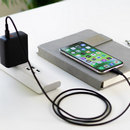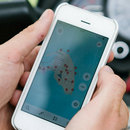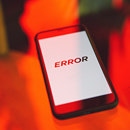What is the Best Way to Charge Your Phone
These days, if you buy a new phone, a fast charger should come with the package, unless you're buying an iPhone. And you should still have some slow-charging ports at home that came with the old phones you bought. I have heard that in some scenarios where there is no requirement for charging speed, such as when you go to bed at night, you should use the slow charging port to charge your mobile phone, because fast charging will damage the battery life.
The fast-charging technology of mobile phones has been around for many years, but we still hear a lot of questions about fast charging, such as whether fast charging will damage the battery life? What is the best way to charge your phone? Would an old phone battery slow down my phone? How much does the battery health drop when it is time to consider replacing the battery? In today's article, we will answer these questions one by one.
Contents
Part 1. What is fast charging?
You may know the physical calculation formula: Power (P) = Voltage (U) x Current (I). In the case of a certain amount of battery life, the power (P) indicates the charging speed. Compared with ordinary charging, fast charging can shorten the charging time in the following three ways to achieve fast charging:
- Increases the current (I), while the voltage (U) remains the same.
- Increases the voltage (U), while the current (I) remains the same.
- Both voltage(U) and current(I) increase.
Of course, to achieve fast charging, the mobile phone itself needs to support fast charging, and then cooperate with the corresponding fast charging charger (including the charger and charging cable).
Part 2. Can fast charging damage your battery?
In principle, the damage to the battery mainly comes from two aspects:
- When the battery is charged and used, the cathode and anode of the battery will shrink and expand with the release and absorption of ions. Fast charging will destroy the chemical substances on the battery, resulting in shortened battery life.
- When the battery is fast charged, due to the relatively high current, the thermal effect of the current will be intensified, resulting in the battery will generate a high temperature, resulting in a sudden decrease in capacity and permanent damage to the cell.
As we mentioned in part 1, compared with ordinary charging, the difference between fast charging is that the voltage output by the charger and the current injected into the battery are higher.
When the charging voltage and current are large, the heat generation of the mobile phone will also increase, which will affect the life of the battery.
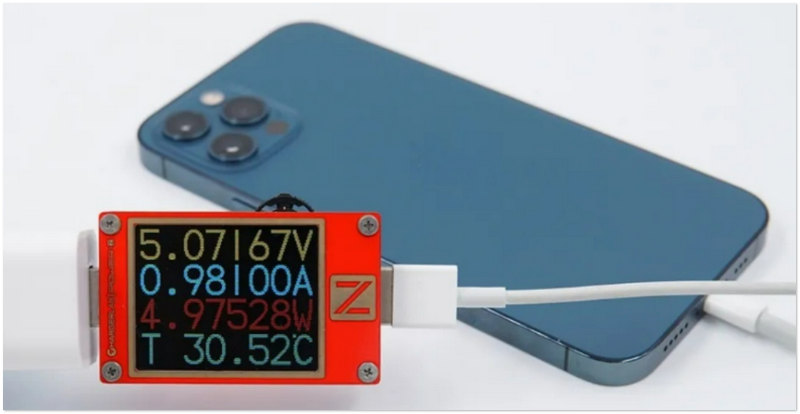
However, to control heat generation and prevent the battery from being overcharged, smartphones are equipped with power management chips to manage the charging process.
Taking the iPhone as an example, the charging process of the iPhone 12 series products is divided into two steps: fast charging + trickle charging. The former is the effect of fast charging, but when the battery is about 80% charged, the charging power will decrease until the battery is fully charged. The combined process extends the lifespan of your battery.

Besides, you may hear a lot of rumors about mobile phone charging, such as "a new phone should be charged for XX hours at the first time", or "charging the phone after the battery runs out, it's good for the battery".
In the era of nickel-cadmium batteries, such a statement does have some basis. But today’s cell phones are powered by lithium-ion batteries, which have shorter charging times, longer lifespans, and can be charged whenever you want.
However, the battery is a consumable item after all, and the battery capacity begins to decline from the moment you turn it on. The "culprit" that causes the battery's capacity to decline is the "charging cycle" - when the phone's power is used up to 100%, it completes a cycle.
This cycle has nothing to do with how long it takes you to use up all the battery power. If you play mobile games, it is a cycle to use a fully charged mobile phone to shut down for a few hours; it is also a cycle if you study hard and use your phone for two or three days before it runs out of power. And it is during such cycles that the actual capacity of the battery declined.

Battery University tested the cycling conditions of 11 kinds of lithium-ion batteries and found that after 250 cycles, the battery capacity had different degrees of attenuation.
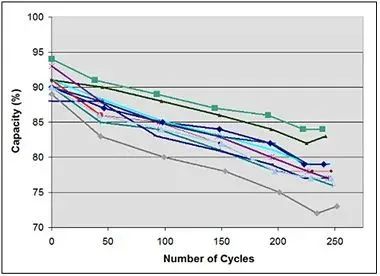
Generally speaking, after 300-500 cycles of lithium-ion batteries, the battery capacity will drop to 80% of the factory capacity. At this time, it is difficult for the phone to maintain peak performance.
Conclusion: The conclusion is that under the dual action of intelligent charging method and chip, the impact of fast charging on battery life has been reduced to a low level, and the damage caused by fast charging to the battery is within a safe and reasonable range, and you don’t have to worry about it.
Part 3. What is the best way to charge your phone?
In addition to fast charging will damage the battery, there is a famous saying about the battery: keeping the phone's power between 0% and 80% is best for the battery. So is this statement correct?
Actually, this argument makes sense. As we all know, when the mobile phone has 20% battery remaining, it will send out a low battery reminder. That's because 20% is the "tipping point," a reminder similar to a battery's self-protection mechanism.
- If the power is lower than 20%, the chemical activity of the battery is likely to decrease, resulting in a loss of battery life.
- If the power is lower than 5%, it may cause the battery to be over-discharged and the internal voltage to be too low, causing the phone to automatically shut down or even fail to charge. In the long run, the battery life of mobile phones will become lower and lower.
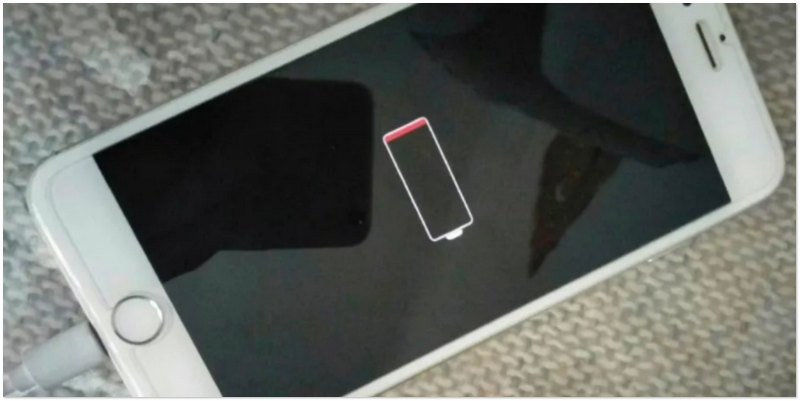
D.S. Kirschen of the University of Washington and many professors have conducted special tests on the safety of lithium-ion batteries. The results show that if the lithium battery is maintained between 65% and 75% for a long time, the battery life of the mobile phone is the longest.
Of course, for most people, it is not realistic to keep the battery in this power range all the time. So can phone battery life be maximized just by keeping the charge between 20% and 80%?
Not always. Because there is another key factor that affects battery life - temperature.
Tests by Battery University show that even when the phone is not in use, the increase in temperature will still accelerate the decline of battery capacity.
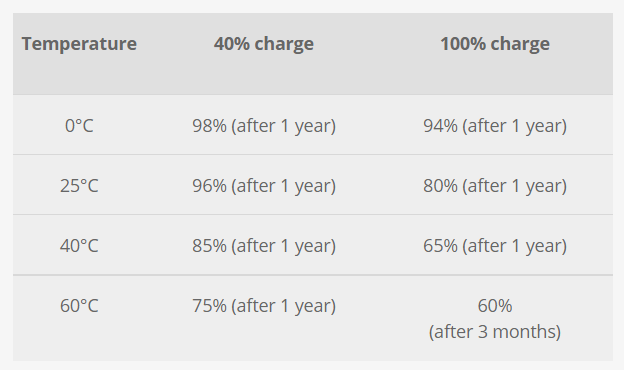
Apple says the ideal temperature for the battery is 62° to 72°F (16° to 22°C). And it’s especially important to avoid exposing your battery to ambient temperatures higher than 95°F (35°C), which can permanently damage battery capacity.
So armed with this knowledge, we can now draw our conclusions: What is the best way to charge your phone to maximize battery life?
- It is better to charge according to your needs and use it whenever you want, there is no need to fully charge it.
- Do not wait for the battery warning or the battery to run out before charging, which will cause more damage to the battery.
- Stay away from extreme temperatures to avoid overheating your phone.
Part 4. Can an old battery slow down my phone?
An experiment on the link between iPhone battery health and performance showed that when the battery health value of the mobile phone is above 80%, the performance will basically not decline (for Android phones there is no public uniform battery health value).
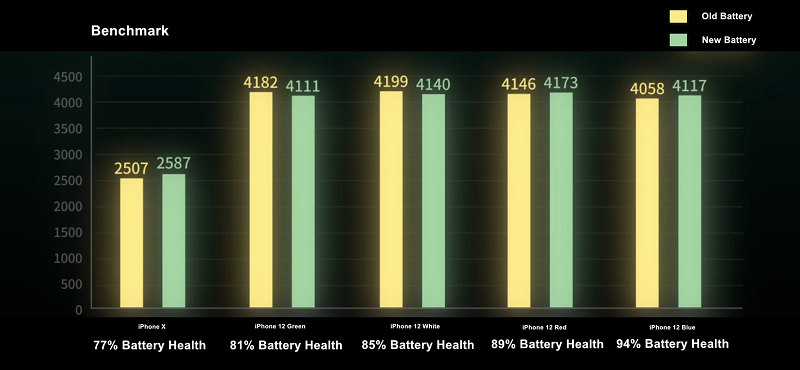
However, mobile phones with low battery health value will reduce the CPU frequency (performance decline) in advance. A mobile phone with 85% battery health will reduce the CPU frequency when there is about 11% battery remaining, and after a new battery is replaced (100% battery health), this phenomenon of frequency reduction will only occur when the battery reaches 5%.
Part 5. How much does the battery health drop when it is time to replace the battery?
As we mentioned in part 4, although the battery health value of the mobile phone is above 80%, the performance will not decrease, but the frequency will be reduced in advance, resulting in less time available for the mobile phone.
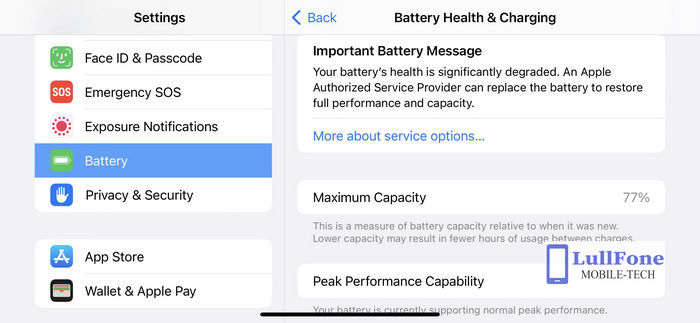
Moreover, when the battery health value of the mobile phone is below 85%, the battery life will be significantly reduced. Therefore, we recommend that when the battery health value of the mobile phone is below 80%, you can consider replacing the battery.
Summary
In fact, the battery is not as fragile as we thought. You've probably replaced two or three phones before your phone's battery died. According to a survey by Strategy Analytics, two-thirds of high-end mobile phone users expect to purchase a new smartphone within the next 12 months. As long as you're not using or charging your phone in an overly harsh environment, the impact on the battery is limited.
Moreover, battery consumption is a long-term process. The best way to charge your phone is to charge it as you want. Please don't always think about it, which brings mental anxiety to you and affects the experience of using the phone.

